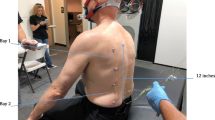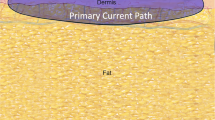Abstract
In an earlier study, we found significant changes in red-blood-cell, leukocyte, and platelet counts, and in red-blood-cell membrane proteins, following exposures of anesthetized pigs to a conducted electrical weapon. In the current study, we examined potential changes in plasma proteins [analyzed via two-dimensional gel electrophoresis (2-DGE)] following two 30 s exposures of anesthetized pigs (Sus scrofa) to a TASER® C2 conducted electrical weapon. Patterns of proteins, separated by 2-DGE, were consistent and reproducible between animals and between times of sampling. We determined that the blood plasma collection, handling, storage, and processing techniques we used are suitable for swine blood. There were no statistically significant changes in plasma proteins following the conducted-electrical-weapon exposures. Overall gel patterns of fibrinogen were similar to results of other studies of both pigs and humans (in control settings, not exposed to conducted electrical weapons). The lack of significant changes in plasma proteins may be added to the body of evidence regarding relative safety of TASER C2 device exposures.



Similar content being viewed by others
References
Jauchem JR, Seaman RL, Klages CM. Physiological effects of the TASER® C2 electronic control device. Forensic Sci Med Pathol. 2009;5:189–98.
Jauchem JR, Bernhard JA, Cerna CZ, Lim TY, Seaman RL, Tarango M. Effects of a TASER® conducted energy weapon on the circulating red-blood-cell population and other factors in Sus scrofa. Forensic Sci Med Pathol. 2013;9:308–20.
Lundvall J, Lindgren P. F-cell shift and protein loss strongly affect validity of PV reductions indicated by Hb/Hct and plasma proteins. J Appl Physiol. 1998;84:822–9.
Schagatay E, Andersson JP, Hallén M, Pålsson B. Selected contribution: role of spleen emptying in prolonging apneas in humans. J Appl Physiol. 2001;90:1623–9.
Černý M, Skalák J, Cerna H, Brzobohatý B. Advances in purification and separation of posttranslationally modified proteins. J Proteom. 2013;92:2–27.
Ahmadizad S, El-Sayed MS. The acute effects of resistance exercise on the main determinants of blood rheology. J Sports Sci. 2005;23:243–9.
Guidi F, Magherini F, Gamberi T, Bini L, Puglia M, Marzocchini R, et al. Plasma protein carbonylation and physical exercise. Mol BioSyst. 2011;7:640–50.
Collen D, Semeraro N, Tricot JP, Vermylen J. Turnover of fibrinogen, plasminogen, and prothrombin during exercise in man. J Appl Physiol. 1977;42:865–73.
Scoppetta F, Tartaglia M, Renzone G, Avellini L, Gaiti A, Scaloni A, Chiaradia E. Plasma protein changes in horse after prolonged physical exercise: a proteomic study. J Proteom. 2012;75:4494–504.
Pasella S, Baralla A, Canu E, Pinna S, Vaupel J, Deiana M, et al. Pre-analytical stability of the plasma proteomes based on the storage temperature. Proteom Sci. 2013;11(1):10.
Lundblad RL. Considerations for the use of blood plasma and serum for proteomic analysis. Internet J Genomics Proteom. 2003;1(2).
R Development Core Team. R: A language and environment for statistical computing. R Foundation for Statistical Computing, Vienna, Austria, 2009. http://www.R-project.org. Accessed 3 Dec 2013.
Smyth GK. Limma: linear models for microarray data. In: Gentleman R, Carey V, Dudoit S, Irizarry R, Huber W, editors. Bioinformatics and computational biology solutions using R and bioconductor. New York: Springer; 2005. p. 397–420.
Wong J. Imputation. R package version 1.3 [Computer software]. 2011. http://CRAN.R-project.org/package=imputation. Accessed 3 Dec 2013.
Smyth GK. Linear models and empirical Bayes methods for assessing differential expression in microarray experiments. Stat Appl Genet Mol Biol. 2004;3: Article 3.
Troyanskaya O, Cantor M, Sherlock G, Brown P, Hastie T, Tibshirani R, et al. Missing value estimation methods for DNA microarrays. Bioinformatics. 2001;17:520–5.
Benjamini Y, Hochberg Y. Controlling the false discovery rate: a practical and powerful approach to multiple testing. J R Stat Soc Ser B. 1995;57:289–300.
Dàvila E, Parés D, Cuvelier G, Relkin P. Heat-induced gelation of porcine blood plasma proteins as affected by pH. Meat Sci. 2007;76:216–25.
Miller I, Gianazza E, Gemeiner M. Any use in proteomics for low-tech approaches? Detecting fibrinogen chains of different animal species in two-dimensional electrophoresis patterns. J Chromatogr B Analyt Technol Biomed Life Sci. 2010;878:2314–8.
Sanchez JC, Appel RD, Golaz O, Pasquali C, Ravier F, Bairoch A, Hochstrasser DF. Inside SWISS-2DPAGE database. Electrophoresis. 1995;16(7):1131–51.
Polaskova V, Kapur A, Khan A, Molloy MP, Baker MS. High-abundance protein depletion: comparison of methods for human plasma biomarker discovery. Electrophoresis. 2010;31:471–82.
Mahn A, Reyes A, Zamorano M, Cifuentes W, Ismail M. Depletion of highly abundant proteins in blood plasma by hydrophobic interaction chromatography for proteomic analysis. J Chromatogr B Analyt Technol Biomed Life Sci. 2010;878:1038–44.
Polack B, Valiron O, Concord E, Freyssinet JM, Hudry-Clergeon G. Molecular characterization of an abnormal fibrinogen by two-dimensional electrophoresis. Clin Chem. 1984;30:2093–7.
Gattoni M, Boffi A. The effect of isoflurane on erythrocyte membranes studied by ATR-FTIR. Biochim Biophys Acta. 2003;1613:72–8.
Zhang Q, Li SZ, Feng CS, Qu XD, Wang H, Zhang XN, et al. Serum proteomics of early postoperative cognitive dysfunction in elderly patients. Chin Med J (Engl). 2012;125:2455–61.
Tsuboko Y, Sakamoto A. Propofol anaesthesia alters the cerebral proteome differently from sevoflurane anaesthesia. Biomed Res. 2011;32:55–65.
Seehof K, Kresse M, Mäder K, Müller RH. Interactions of nanoparticles with body proteins—improvement of 2D-PAGE-analysis by internal standard. Int J Pharm. 2000;196:231–4.
Vercauteren FG, Arckens L, Quirion R. Applications and current challenges of proteomic approaches, focusing on two-dimensional electrophoresis. Amino Acids. 2007;33:405–14.
Gauci VJ, Wright EP, Coorssen JR. Quantitative proteomics: assessing the spectrum of in-gel protein detection methods. J Chem Biol. 2011;4:3–29.
Dawes DM, Ho JD, Reardon RF, Miner JR. The cardiovascular, respiratory, and metabolic effects of a long duration electronic control device exposure in human volunteers. Forensic Sci Med Pathol. 2010;6:268–74.
Ho JD, Dawes DM, Cole JB, Miner JR. Human physiologic effects of a civilian conducted electrical weapon application. Emerg Med Australas. 2009;21(Suppl 1):A28.
Balfoussia E, Skenderi K, Tsironi M, Anagnostopoulos AK, Parthimos N, Vougas K, et al. A proteomic study of plasma protein changes under extreme physical stress. J Proteom. 2014;98:1–14.
Acknowledgments
This project was supported by funds from the Air Force Research Laboratory, 711th Human Performance Wing. Authors’ contributions are as follows. JRJ: Designed and directed the overall research plan, and wrote the major portions of the paper. CZC and TYL: Prepared plasma samples and performed 2-D-PAGE. RLS: Supervised research and performed statistical analyses of the data.
Conflict of interest
The authors have not had any relationship with any manufacturers of conducted energy weapons, including employment, consultancies, stock ownership, honoraria, paid expert testimony, patent applications/registrations, and grants or other funding.
Author information
Authors and Affiliations
Corresponding author
Additional information
The views, opinions, and/or findings contained in this report are those of the authors and do not necessarily state or reflect those of the US Government, and should not be construed as an official Department of Defense position, policy, or decision. This article is a US Government work and is in the public domain in the USA.
Rights and permissions
About this article
Cite this article
Jauchem, J.R., Cerna, C.Z., Lim, T.Y. et al. Exposures of Sus scrofa to a TASER® conducted electrical weapon: no effects on 2-dimensional gel electrophoresis patterns of plasma proteins. Forensic Sci Med Pathol 10, 526–534 (2014). https://doi.org/10.1007/s12024-014-9606-z
Accepted:
Published:
Issue Date:
DOI: https://doi.org/10.1007/s12024-014-9606-z




